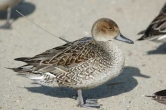- Home
- About S&T
- Taxa/Organisms
- Ecosystems
- Issues
- Methods & Tools
- Reports & Publications
- Location
- Search
Publisher: USGS | Science Center: Forest and Rangeland Ecosystem Science Center (FRESC, Corvallis) | Format: URL
ris.wr.usgs.gov — The Raptor Information System (RIS) is a computerized literature retrieval system that focuses on raptor management, human impacts on raptors, the mitigation of adverse impacts, and basic raptor biology (with an emphasis on population dynamics and predation). The raptor contaminants database is a subset of RIS that includes references with More...

Publisher: USGS | Science Center: Patuxent Wildlife Research Center (PWRC, Laurel) | Format: URL
www.pwrc.usgs.gov — Breeding Bird Survey (BBS) is a project monitored by the USGS and the Canadian Wildlife Service on the status and trends of North American bird populations. The data can be used to estimate population trends and relative abundances at various scales. The BBS is a cooperative effort between the U.S. Geological Survey's Patuxent Wildlife Research More...

Publisher: USGS | Science Center: Alaska Science Center (ASC, Anchorage) | Format: URL
www.absc.usgs.gov — This site links to a database of bird distribution which looks at patterns in the numbers of birds detected among Alaska Off-road Breeding Bird Survey routes. The database can be searched in two different ways: by area, and by species. To find out more about the data contained in the database of bird distribution, take a look at the metadata page, More...

Publisher: USGS | Science Center: Forest and Rangeland Ecosystem Science Center (FRESC, Corvallis) | Format: URL
fresc.usgs.gov — The Conservation Genetics Lab carries out molecular analysis, pedigree analysis, modeling, data management, and cryogenic sample repository. As a part of this research, the lab investigates the effectiveness of molecular markers used to enhance enforcement of the Endangered Species Act policy. During the past 15 years, this research has involved More...

Publisher: USGS | Science Center: Biological Informatics | Format: URL
biology.usgs.gov — This web page offers samples of genetics and genomics research from the USGS Biological Resources Discipline about the conservation genetics of birds.

Publisher: USGS | Science Center: Patuxent Wildlife Research Center (PWRC, Laurel) | Format: URL
www.pwrc.usgs.gov — The North American Bird Phenology Program houses a unique and largely forgotten collection of six million Migration Observer Cards that illuminate migration patterns and population status of birds in North America. These handwritten cards contain almost all of what was known of bird status from the Second World War back to the later part of the More...

Publisher: USGS | Science Center: Forest and Rangeland Ecosystem Science Center (FRESC, Corvallis) | Format: URL
fresc.usgs.gov — Ferruginous Hawks (Buteo regalis) studies are being conducted to evaluate the efficacy of monitoring long-term trends of the Ferruginous Hawk (Buteo regalis) nesting and productivity. The basic approach involves comparing estimates of occupancy and productivity based on surveys of historical territories with estimates from quadrant sampling.

Publisher: USGS | Science Center: Columbia Environmental Research Center (CERC, Columbia) | Format: URL
www.cerc.usgs.gov — The BFRS works cooperatively with team members from CERC and with faculty and graduate students of Department of Wildlife and Fisheries Sciences at Texas A&M University in research areas represented by the branch structure of the CERC including toxicology, ecology, biochemistry and physiology, environmental chemistry, ecogeography, and information More...

Publisher: USGS | Science Center: Alaska Science Center (ASC, Anchorage) | Format: URL
alaska.usgs.gov — This web resource provides information concerning the on-going Research at the USGS Alaska Science Center on birds and avian influenza (bird flu). The site links to quick facts, on-going research, workshop results, monitoring and surveillance, guidelines on how to safeguard against avian influenza, publications and reports, migratory bird More...

Publisher: Other (Society of Environmental Toxicology and Chemistry (SETAC)) | Format: .PDF
www.pwrc.usgs.gov — From the abstract: Environmental contaminants can have profound effects on birds, acting from the molecular through population levels of biological organization. An analysis of potential contaminant threats was undertaken at 52 Important Bird Areas (IBAs) within the northeastern Atlantic coast drainage. Using geographic information system More...

Publisher: USGS | Science Center: Biological Informatics | Format: URL
biology.usgs.gov — This web page present samples of genetics and genomics research from the USGS Biological Resources Discipline about the epidemiology of avian diseases.
